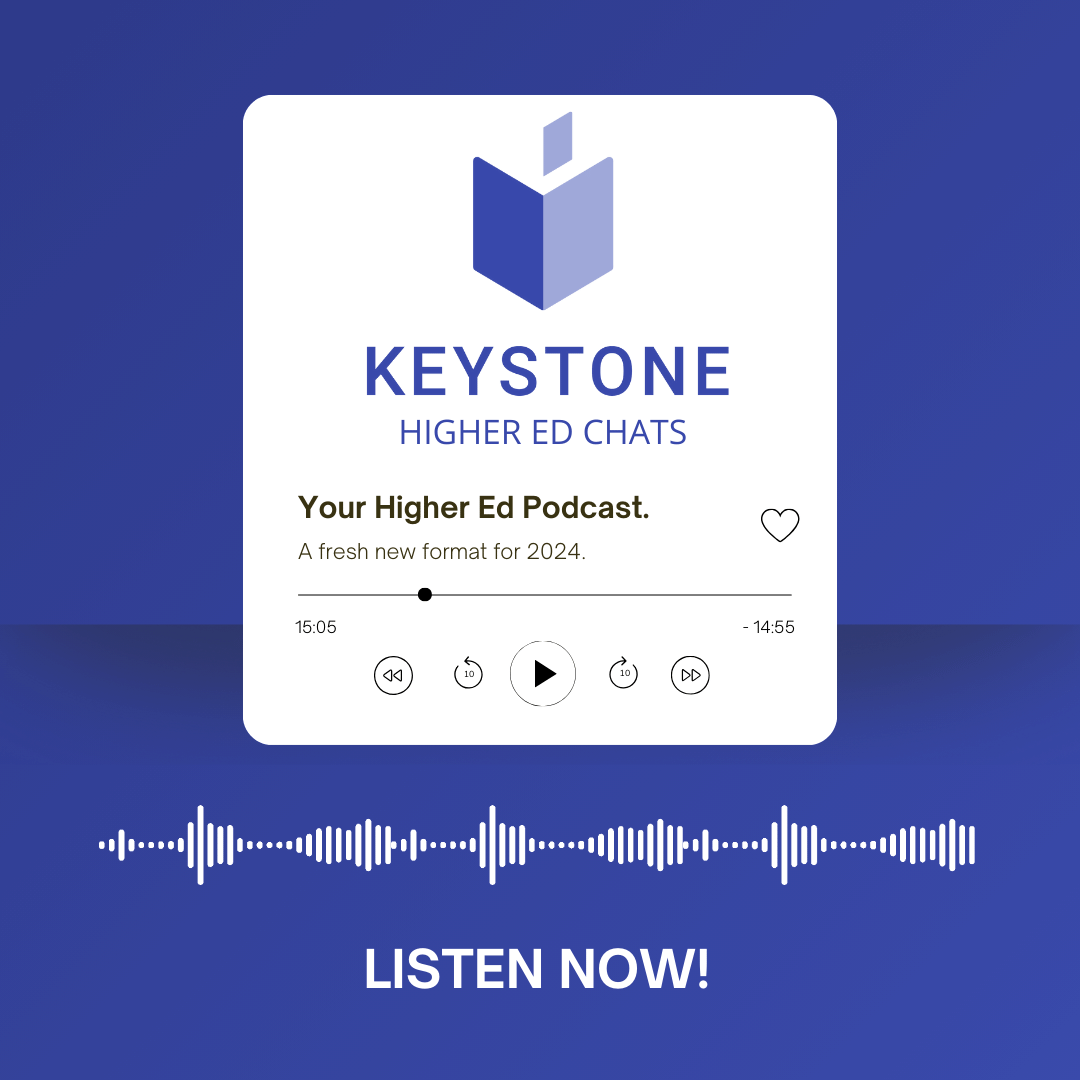- SERVICES
- HIGHER EDUCATION MARKETING
- ENGAGEMENT & ENROLLMENT MANAGEMENT
- STUDENT RECRUITMENT AGENCIES
- PROFESSIONAL EDUCATION & TRAINING
- WHO WE ARE
WHO WE ARE
Learn more about Keystone Education Group, including our leadership structure, why choose Keystone as your educational partner, and company press releases.
QUICK LINKS
- RESOURCES
RESOURCES
Find a range of helpful resources to help with your educational marketing. From on-demand webinars, reports & data, to customer testimonials and our downloadable media kit.
QUICK LINKS
- NEWS
- REQUEST A CALL

Four Simple Yet Effective Higher Ed Marketing Strategies for 2021
4 min read
|- Keystone Higher Education News
- Four Simple Yet Effective Higher Ed Marketing Strategies for 2021
 Worldwide, vaccines are becoming more widespread, and universities are beginning to reopen, meaning one thing: you have a class to enroll. With marketing trends changing more than social distancing guidelines, it’s challenging to know where to begin. Keystone Academic Solutions took a look at four areas of higher education marketing to rethink in 2021.
Worldwide, vaccines are becoming more widespread, and universities are beginning to reopen, meaning one thing: you have a class to enroll. With marketing trends changing more than social distancing guidelines, it’s challenging to know where to begin. Keystone Academic Solutions took a look at four areas of higher education marketing to rethink in 2021.
- Increase brand awareness
Do prospective students know what makes your institution unique? Do your campus administrators have a universal elevator pitch? Do your admissions representatives know who they’re recruiting?
Brand strategy can solve all of these questions. While many institutions have brand standards and guidelines for their university crest and athletic logos, schools that really understand their student personas and unique story are the minority. According to branding agency, Ignyte Brands, “most small businesses (think colleges) can expect to invest $90,000 to $180,000 and six to eight months to transform their brand.”
With steady employee turnover in various departments, it’s nearly impossible to assume everyone’s on the same page regarding your institution’s branding. One approach to keep everyone up to speed would be the most basic and most affordable branding level; the “brand refresh.”
After a year of virtual learning, pivoting professors, and an empty on-campus event catalog, university marketing teams reflected on what made their campuses different from any other online university. A brand refresh typically includes new photography, copywriting, website design, visual identity, and brand discovery. These components are challenging to gather when campus is empty, so Fall 2021 might be the best time ever to consider a brand refresh and a new understanding of what your university is all about.
- Boost social media presence
Amid a global pandemic, Generation Z has, like the rest of the population, spent a lot of their time in front of a screen in the last year. For COVID updates, stories, and personal updates, people flocked to Facebook. For funny memes, dance trends, and uplifting content, TikTok took over. Instagram held its popularity as the all-of-the-above platform. While Zoom fatigue plagued professors, professionals, and students alike, smartphone owners continued to hover over their screens to kill time during isolation. This trend of endless video watching on social platforms is expected to grow long after the masks come off; 70% of prospective students have used social media to research higher education institutions.
After endless screen time, current high school students are now trained to interact with technology differently than their grandparents and parents were. One minute they could be shooting their next TikTok video, and the next answering test questions on their virtually proctored midterm. Live streaming features like Facebook Live and Instagram will remain popular throughout 2021, so these need to be included in your social media marketing strategy.
Lastly, with such a substantial rise in video viewing since 2019, it’s clear static image posting is no longer enough. In an ideal world, your institution would have an endless budget to hire professional videographers, drone camera operators, and gather the most impressive students on campus for a shoot. However, if you’re like most institutions, 2021 is not your year for bigger marketing budgets. One way to increase engagement and add authenticity to your social media marketing is to employ a few members of the team to frequently respond to prospective student comments and questions.
- Current students and alumni involvement
After a less than traditional Spring 2020 semester, parents and students may want to know where graduates are now. They might ask what life was like as a college student during quarantine? How were they able to land entry-level jobs despite limited “real-world” internship exposure? Would they choose to do it all over again?
For decades, word-of-mouth marketing worked wonders for colleges and universities, but now more than ever, the next generation of college students want answers. Choosing where to pay your enrollment deposit is a life-altering decision, and many times students are feeding off influencers, social media, current students, alumni and reviews to make such an important decision. One easy way to get student testimonials is through reviews. Send out a survey, highlight the review section on an alumni Facebook group, or set up a personalized email campaign asking for student and alumni responses.
The best part about building an organized collection of authentic student reviews is you can use them across multiple channels in different stages of the prospect’s journey. A single relevant review can work on a digital ad, social media post, Instagram Story, email, event invite, drive-to-apply postcard, and school-branded brochure. Not only does authentic word-of-mouth advertising influence future students, it won’t cost your university a dime.
- Purpose-driven, inclusive campaigns
Don’t just talk about it, be about it. Throughout the COVID-19 pandemic, we’ve seen positive stories of people helping others. Many colleges exhibit random acts of kindness and stand up for what’s right, but global issues have exponentially increased over the past year. After reviewing hundreds of institutions’ “About Us” page, the first things you notice are mission, vision, and value, but “purpose” doesn’t always make the cut.
Highlight more community service initiatives, specific ways your students help others, causes the institution gets behind, and purpose-driven events on campus. Generation Z may be the most informed generation ever, and with 24/7 access to endless news, why shouldn’t they be? However, don’t blindly start taking every cause under your wing, because it will feel like you’re posing for the camera. According to Sprout Social, “Audiences expect brands to show leadership and meaningful action on social issues, rather than exploit them for marketing opportunities.”
To build deeper connections with your targeted students, it’s essential to focus on inclusivity and diversity. We find diversity statistics in many quick facts sheets and on “About Us” mission statements, but what are institutions doing to stay relevant during these socially divisive times? Taking a stance will increase your authenticity point and build trust between you and your prospective student audience.
More about:
Related Tags
Just For You
Top Picks
Higher Ed Chats Podcast
Listen to the latest episodes of our Higher Ed Chats Podcast - new format for 2024. Hear from Higher Ed thought-leaders from around the world!

Webinar: Dos & Don'ts of Higher Ed Social Media
.png?width=500&name=Social%20Media%20Webinar%20March%2024%20Banners%20(3).png)
Join our live webinar on 27th March to hear from a panel of Higher Ed Social Media experts.
Subscribe
to get the latest news and updates





